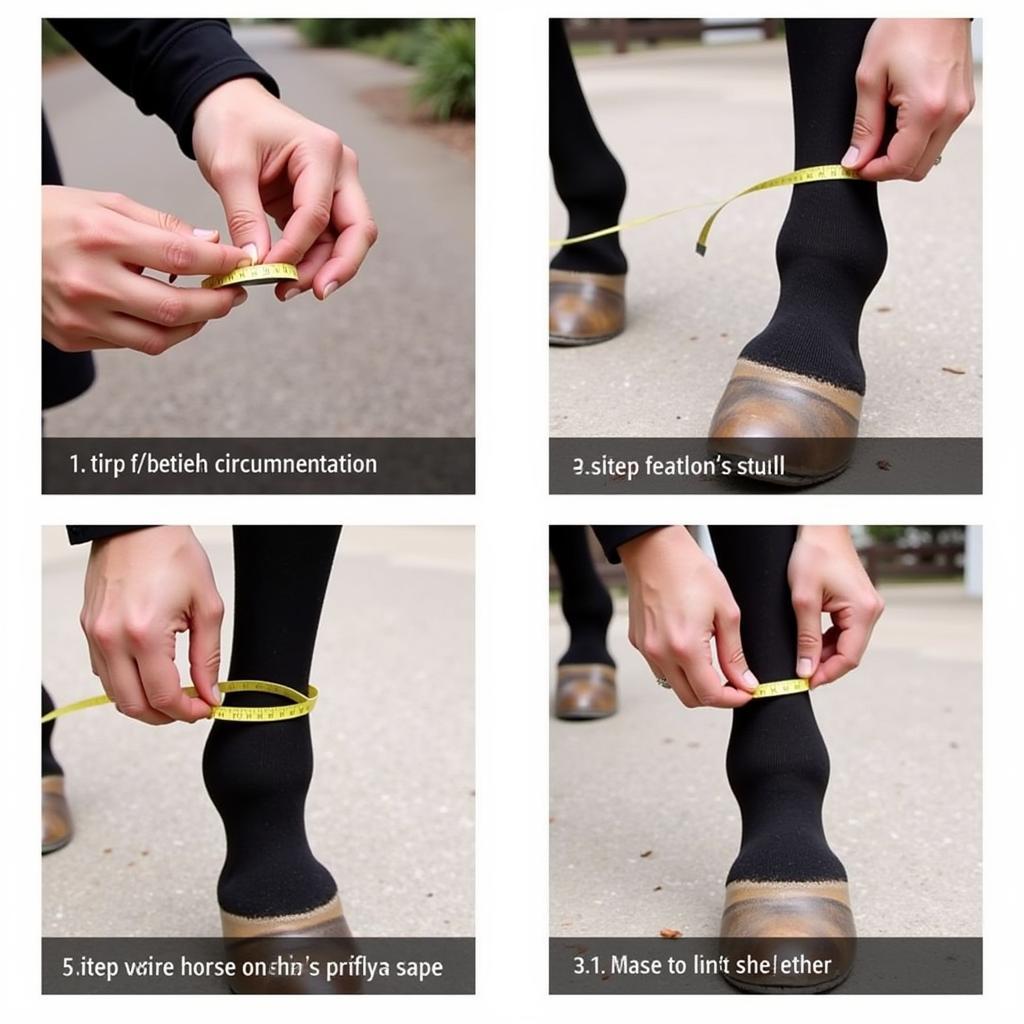Horse Fetlock Boots are an essential piece of equipment for many riders, offering protection and support for the horse’s fetlock joint during various activities. Whether you’re a seasoned competitor or a casual trail rider, understanding the different types of fetlock boots and how to choose the right ones for your horse is crucial.
Why Use Horse Fetlock Boots?
Horse fetlock boots, sometimes called ankle boots, serve a vital role in protecting the fetlock joint, a complex structure of bones, tendons, and ligaments susceptible to injury. These boots provide a barrier against knocks, scrapes, and impacts that can occur during training, competition, or even turnout. Using fetlock boots can minimize the risk of injuries like interference, brushing, and overreaching. Furthermore, certain types of boots can provide added support and stability to the joint, helping to prevent strains and sprains, particularly during strenuous activities.
Types of Horse Fetlock Boots
Choosing the right fetlock boots depends on the intended use and the horse’s individual needs. Here’s a breakdown of common types:
- Neoprene Fetlock Boots: These offer basic protection and are suitable for everyday riding and turnout. They are lightweight, breathable, and easy to clean.
- Leather Fetlock Boots: Known for their durability and classic look, leather boots offer excellent protection but require more maintenance.
- Synthetic Leather Fetlock Boots: Combining the benefits of leather and synthetic materials, these boots offer good protection, are easier to care for than traditional leather, and are often more affordable.
- Splint Boots: These boots extend higher up the leg to cover the splint bone, providing additional protection against impacts and interference injuries. Check out more on fetlock horse boots.
- Skid Boots: Designed specifically for hind legs, skid boots prevent injuries caused by the horse dragging its hind feet, especially common in sliding stops or quick turns.
How to Choose the Right Size and Fit for Horse Fetlock Boots
 Correctly fitting horse fetlock boots
Correctly fitting horse fetlock boots
Ensuring a proper fit is essential for maximizing protection and preventing discomfort. A boot that’s too loose can slip and become ineffective, while a boot that’s too tight can restrict movement and cause rubbing. Consult the manufacturer’s sizing chart and measure your horse’s fetlock circumference accurately. The boot should fit snugly but not be constricting, allowing for natural movement of the joint.
“A well-fitted boot should be snug but not tight,” advises Dr. Emily Carter, DVM, specializing in equine sports medicine. “You should be able to fit a finger comfortably between the boot and the horse’s leg.”
Caring for Your Horse Fetlock Boots
Regular cleaning is essential for maintaining the hygiene and longevity of your horse fetlock boots. Remove dirt and debris after each use with a brush and rinse with water. For more stubborn stains, use a mild detergent specifically designed for horse equipment. Allow the boots to air dry completely before storing them in a clean, dry place. Learn about horse front leg anatomy.
Conclusion
Investing in quality horse fetlock boots is an important step in protecting your horse’s legs and ensuring their well-being. By understanding the different types of boots available and choosing the right fit for your horse, you can help prevent injuries and maintain their soundness for years to come. Remember to always consult with your veterinarian or a qualified equine professional for personalized advice on selecting and using horse fetlock boots. You might be interested in jumping boots for horses.
“Regularly inspect your horse’s fetlock boots for wear and tear,” reminds Dr. Carter. “Replace them as needed to ensure optimal protection.” You can find quality boots like kombat boots for horses on our website. Also, learn more about check ligament injury in horses.
FAQ
- How often should I clean my horse’s fetlock boots?
- Can I use fetlock boots on my horse during turnout?
- What are the signs of a poorly fitting fetlock boot?
- How do I measure my horse’s fetlock for boots?
- What are the different materials used in fetlock boots?
- Can I use the same fetlock boots for the front and hind legs?
- What should I do if my horse develops a rub or sore from the fetlock boots?
Need support? Contact us at Phone Number: 0772127271, Email: [email protected] Or visit us at QGM2+WX2, Vị Trung, Vị Thuỷ, Hậu Giang, Việt Nam. We have a 24/7 customer service team.